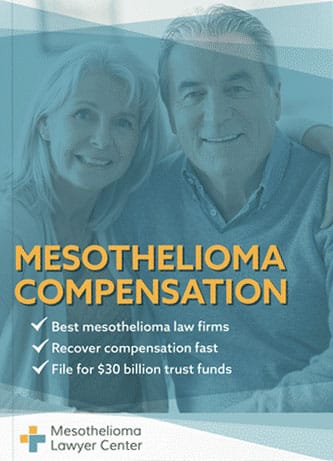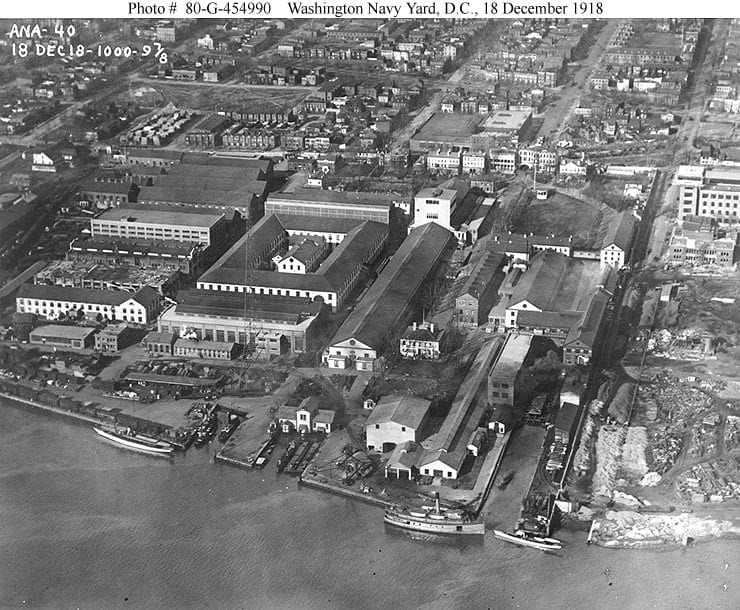The Washington Navy Yard is one of the oldest military installations in the U.S. Today, it is an administrative and ceremonial site, but in the past, it was an active Naval yard that used asbestos. Workers and Navy service members at Washington Navy Yard risked asbestos exposure and later illnesses.
If you or a loved one suffer from mesothelioma, asbestos-related lung cancer, or asbestosis, you may qualify for substantial compensation. Currently, there is over $30 billion in asbestos trust funds, awaiting those who’ve been diagnosed with an asbestos illness. We invite you to fill out our form today for a free Financial Compensation Packet, filled with information about experienced mesothelioma lawyers in your area, how to get paid in 90 days, how to file an asbestos trust fund claim and much more.


FREE Financial Compensation Packet
- Info on law firms that will recover your HIGHEST COMPENSATION
- Learn how to get paid in 90 days
- File for your share of $30 billion in trust funds

Did Washington Navy Yard Use Asbestos?
The Washington Navy Yard’s role as a shipbuilding facility was well before the peak period of asbestos use in the industry. By the time asbestos was a common material in industrial workplaces, the Navy Yard was no longer building ships.
The Washington Navy Yard manufactured munitions and ordnance and used asbestos in these operations. This went on through the 1960s when manufacturing operations ceased.
Washington Navy Yard History
The Washington Navy Yard is one of the oldest military installations in the U.S. It was created in 1799 on Washington D.C.’s 9th and M Street after an Act of Congress purchased the land.
- The initial role of the Washington Navy Yard was for shipbuilding. Ships were constructed here for the War of 1812. It also served as a strategic center for the war. The U.S. military burned this early version of the Navy Yard to keep it out of the hands of the British army.
- After it was rebuilt, the Navy Yard serviced ships during the Civil War, including the USS Monitor. It also served as a munition and ordnance plant.
- Manufacturing continued at the Washington Navy Yard through World War II, when the company added guns and ammunition manufacturing.
- During World War II, the Washington Navy Yard employed over 20,000 people. It became the largest naval ordnance plant in the world at the time and continued to design numerous weapons.
- In 1945, its name changed to the U.S. Naval Gun Factory, and it continued crafting guns and ammunition until the 1960s.
- In 1973, the Washington Navy Yard was placed on the National Register of Historic Places. Within three years, it became a part of the National History Landmark.
Today, the Washington Navy Yard is an administrative center for the Chief of Naval Operations, Naval Sea Systems Command, the Naval Historic Center, the Naval Facilities Engineering Command, and other Naval groups.
How Did Washington Navy Yard Use Asbestos?
Washington Navy Yard was no longer a shipbuilding or repair facility when other shipyards used asbestos. However, it did manufacture munitions, including asbestos products and materials.
For instance, documents dating back to 1918 indicate that metal blocks contained over 65% asbestos that was molded into the backs of cannons.
Asbestos was also found in:
- Fireproof paint
- Electric boosters
- Sealants
- Ignitions
- Insulation
- Ceilings
- Boards
- Equipment
How Did Asbestos at Washington Navy Yard Affect Workers and Veterans?
Anyone who worked at the site, including both civilian workers and Navy service members, could have been exposed to asbestos.
Asbestos releases fibers when handled. These fibers can be inhaled by anyone working in the area. Workers who handled asbestos materials directly had the highest risk of exposure.
Another issue people faced was second-hand exposure, which became a significant concern at many industrial sites throughout the United States.
Since Washington Navy Yard workers rarely used protective gear nor changed clothing before returning home every day, children and spouses were exposed to asbestos by simply doing laundry or hugging their loved ones.
Several children who grew up around fathers who worked at shipyards developed mesothelioma themselves years later.
Washington Naval Yard Superfund Site
In April 1998, the Environmental Protection Agency (EPA) and the Agency for Toxic Substances and Diseases Registry (ATSDR) designated the Washington Navy Yard as a Superfund site.
Within a year, ATSDR conducted several site investigations, including evaluating groundwater and on-site soil data.
At least 17 locations throughout the shipyard contained contaminated soil and groundwater contamination.
Even though large amounts of asbestos were found at the site, metals were the primary concern, as well as lead paint. ATSDR indicated that lead paint was the primary source of surface soil contamination, which was over 18,700 ppm of the EPA’s recommended 400 ppm level.
The EPA and ATSDR took several steps to ensure public safety, including but not limited to the following:
- Removing the Coal Storage Yard in order to abate contaminants
- Removing Admiral’s Row to remove excessive levels of toxins
- An awareness program for the public, as well as construction workers, the military, and anyone else who may still work around asbestos
- Posting advisory warnings to area residents, and more.
Compensation for Asbestos Exposure at Washington Naval Yard
If you believe exposure at the Washington Navy Yard contributed to your asbestos illness, contact a mesothelioma lawyer to find out what you can do about it.
Neither civilians nor veterans can sue the military or federal government over asbestos exposure, but they can sue the asbestos companies. These companies supplied military institutions like the Washington Naval Yard with asbestos without warning workers of the risks.
A lawsuit against asbestos companies can lead to a settlement or a jury award. If the companies involved went bankrupt, a lawsuit is not an option. In these cases, most victims qualify to make a claim with an asbestos trust fund.
Veterans can claim benefits through the U.S. Department of Veterans Affairs. VA benefits include monthly disability compensation, medical care, and benefits for dependents.
Help and Additional Resources
If you’ve been injured by asbestos, keep in mind that there is a good chance that you’ll qualify for considerable compensation. Don’t forget to fill out our form to get our free Financial Compensation Packet, filled with information on the experienced asbestos and mesothelioma attorneys in your area. If you have questions or need additional assistance, contact us at 800-793-4540.

Paul Danziger
Reviewer and EditorPaul Danziger grew up in Houston, Texas and earned a law degree from Northwestern University School of Law in Chicago. For over 25 years years he has focused on representing mesothelioma cancer victims and others hurt by asbestos exposure. Paul and his law firm have represented thousands of people diagnosed with mesothelioma, asbestosis, and lung cancer, recovering significant compensation for injured clients. Every client is extremely important to Paul and he will take every call from clients who want to speak with him. Paul and his law firm handle mesothelioma cases throughout the United States.
References
- U.S. Environmental Protection Agency. (n.d.). Superfund Site: Washington Navy Yard Washington, DC Cleanup Activities.
Retrieved from: https://cumulis.epa.gov/supercpad/SiteProfiles/index.cfm?fuseaction=second.cleanup&id=0300031 - Naval History and Heritage Command. (2021, September 21). Washington Navy Yard, District of Columbia.
Retrieved from: https://www.history.navy.mil/browse-by-topic/organization-and-administration/installations/washington-navy-yard.html
